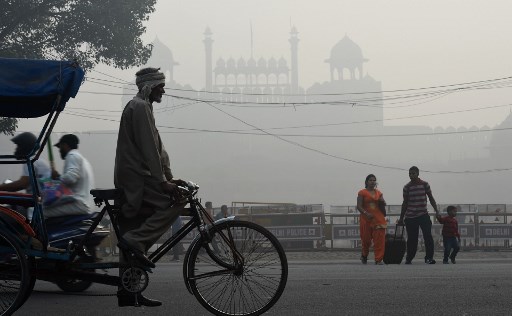New Delhi: The rising air pollution in the national capital is very unhealthy and a serious matter of concern considering its effects on health. The government is trying its best to combat this pollution.
Delhi’s air quality has been oscillating between ‘very poor’ and ‘severe’ categories for the past 10 days. It recorded its second-highest pollution level of the year on Sunday with an AQI of 450.

Earlier Delhi’s Environment Minister Imran Hussain had earlier met a high-level meeting to review the implementation of the Graded Response Action Plan (GRAP) mandated by Supreme Court of India for combatting and mitigating air pollution in Delhi in view of the prevailing metrological conditions in the whole of northern India.
He was informed by the concerned department that the main reasons for the present conditions in Delhi are temperature inversion, meteorological conditions, and low wind speed which do not allow the pollutants to disperse easily in the atmosphere.
Air pollution is measured by an index called Air Quality Index (AQI), it is a number used by government agencies to communicate to the public how polluted the air currently is.

The main causes of Air Pollution are emissions from different transport modes, the burning of fossil fuels, industrial production, are some of the main causes of air pollution.
Air pollution is almost as deadly as tobacco. Around 92 per cent of the world’s population lives in areas with dangerous levels of air pollution.
According to the University of Washington’s Institute for Health Metrics and Evaluation, in 2016, it was linked to the deaths of 6.1 million people.
In 2012, air pollution caused premature deaths on average of 1 year in Europe and was a significant risk factor for a number of pollution-related diseases, including respiratory infections, heart disease, COPD, stroke and lung cancer.
The health effects caused by air pollution may include difficulty in breathing, wheezing, coughing, asthma and worsening of existing respiratory and cardiac conditions.

